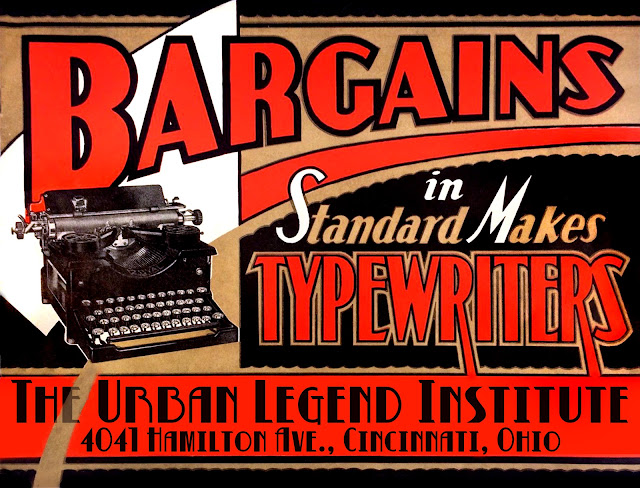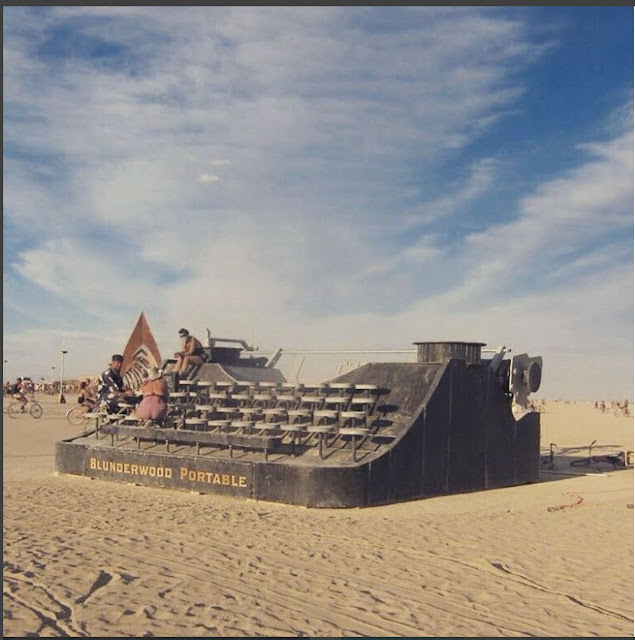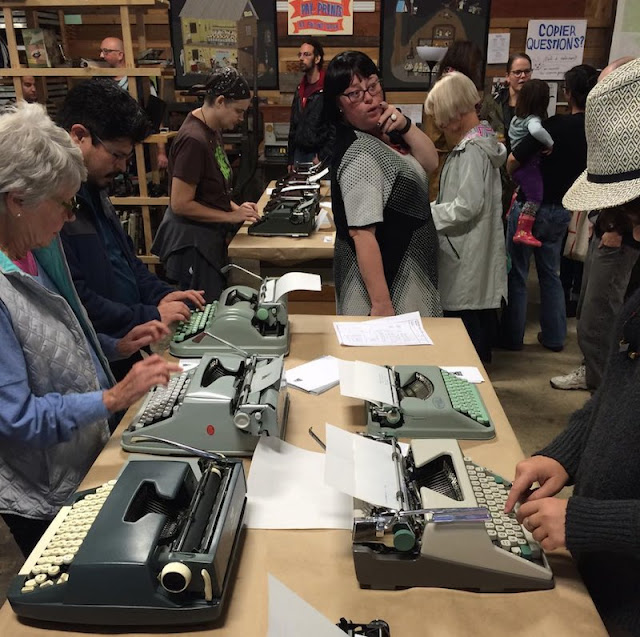The text shown on
my previous post was typed on an Adler Universal.
The Philosophy Teacher gets the coveted über type geek award for figuring that out! Here's some further information.
Several years ago I got obsessed with acquiring an Adler Universal. At fault were (a) my fantasy of The Perfect Typewriter, (b)
Alan Seaver's report on his white and gray Universal, and (c)
Vintage Type's photos of a gorgeous Universal finished in a sort of metallic tan. (
Donald Lampert shows off his similar machine on The Typewriter Database.)
This model is common in Germany, but I wasn't about to spend a lot of money shipping a QWERTZ behemoth over here. I wanted QWERTY, but Universals are not at all easy to find in the US.
At a West Virginia typewriter collectors' meeting a couple of years ago, a certain generous typospherian presented me with a Universal that is similar to Alan's (thanks, MP!). (Mine is #1328363 and Alan's is #1336842. Both were made in 1961, according to
TWDB.) It needed some work on the escapement (which, anecdotally, seems to be a bit finicky on these machines) but then it was functional. I was very pleased, but the experience of a Perfect Typewriter did not materialize, and the machine went onto a shelf.
More recently, I got a
1967 Triumph Matura that is essentially the same typewriter—with a different name, different styling, and aids for the blind.
Well, a few months ago, I spotted a metallic-finish Universal on eBay—a Buy It Now at a reasonable price. There was clearly some damage and discoloration to the paint, but it was that color I'd dreamed of, and the typeface was interesting ... I couldn't help myself. I clicked the button.
I recently got around to cleaning this typewriter, and I am very pleased. Is it Perfect? No, but it does have a very nice touch—quick and comfortable—and lots of nifty features. Let's take a look.
The carriage comes off when you unscrew two side pins and do some jiggling.
The serial number is #1172288, made in 1957. (Many typewriters in my collection that get top marks from me in styling and quality turn out to have been made in 1956 or 1957.) The carriage also bears the mysterious numbers 3/1100 - 4689.
The machine was sold or serviced in Camden, New Jersey.
As it turns out, this machine has some features that my other Universal doesn't.
The numbered ring attached to the right platen knob can be turned to control how far the paper injector advances the paper.
In the upper right corner of this photo you see, closer to you, the carriage release lever. Behind it is a lever that controls the right margin. Whereas my other Universal has a straightforward and conventional margin system, this one has a system where you move to the margin, depress the lever, move to the new margin location, and release the lever. It isn't particularly efficient, and you can't see where the margins are set unless you move the carriage and find out, but it's neat anyway.
My other Universal does have the two features shown below: a paper support and the lever on the left, which has a double function: clearing all tab stops, or preventing any tab stops from being set.
The left-pointing arrow on the decimal tabulator is a "skip key." It will advance the carriage to the left as long as you hold it down, skipping over any tab stops you may have set. Very clever.
On the right below are the buttons that switch the machine from single to d o u b l e spacing. (The double spacing is unreliable on my machine so far.)
And then there is the "ea" key. That stands for "each," which might sometimes be useful in lists of prices but is redundant, I think, when you have @ (5 apples @ 25¢ = 5 apples, 25¢ ea).
I know of no typewriter except the Adler Universal that regularly offers an "ea" key. In my typecast the other day, I took advantage of it. I suppose that's how The Philosophy Teacher figured out what machine I used.
Here's a complete typing sample.
Now, The Philosophy Teacher has discovered something very intriguing. I created the justification in the typecast above by typing and editing my text several times until I figured out how to align the right margin. You can see that I inserted some extra spaces to make this work. (If the Universal allowed for half-spacing, this could be done more elegantly.) In one line, I also omitted a space after a semicolon. But The Philosophy Teacher has found
a reference to an Adler Universal with a "semi-automatic justification" device in the collections of London's Science Museum (which I'm determined to visit when I return to London next summer):
ADLER UNIVERSAL TYPEWRITER with semi-automatic justification and 15 inch platen, West German, early 1960's, serial no.1310141, complete with operating instructions for the standard typewriter and the margin justification device
That serial number should date from 1960. How does the device work? We don't know, but I think it would have to be something like the device used on the Varityper DSJ. You type a line once without actually making an impression on the paper, and the device either calculates how many spaces you need to add, or (as on the Varityper) automatically adjusts the size of the spaces between words to make the line come out right. Then you type the line again, this time leaving marks on paper. It's a very clever, purely mechanical solution to a tough typing problem. And unless this version of the Universal is electrified, it is the only manual typewriter I know of that offers such a feature.
Thus ... the Quest for the Perfect Typewriter continues!











































































































